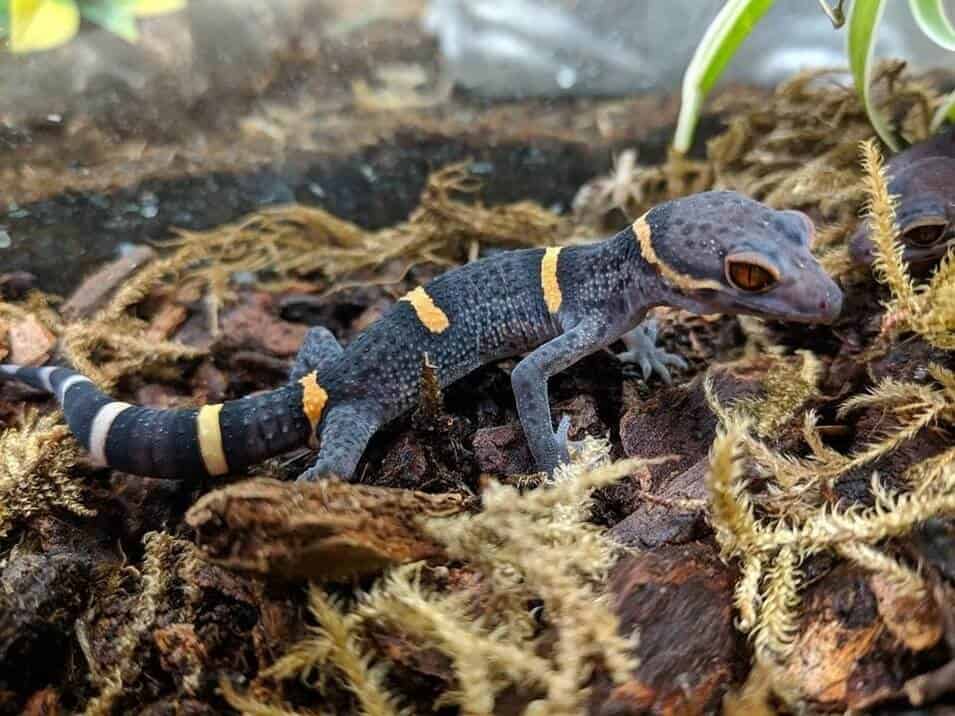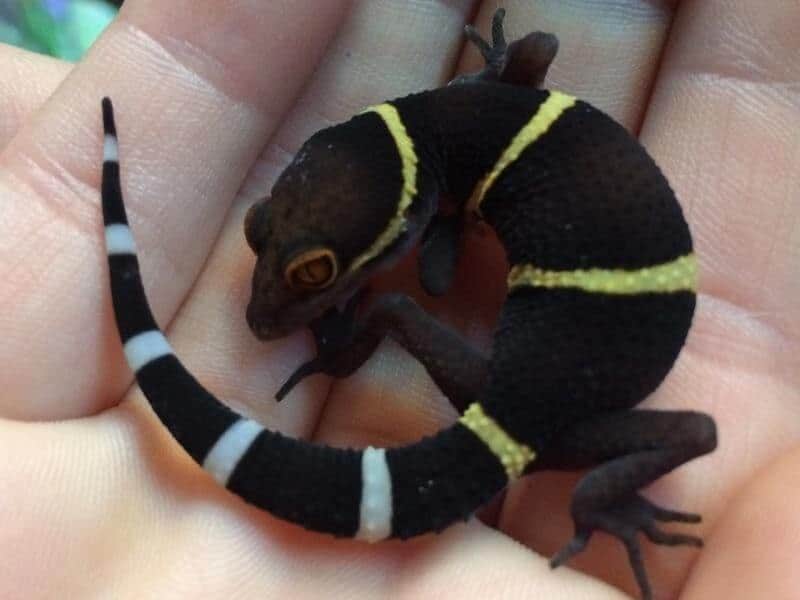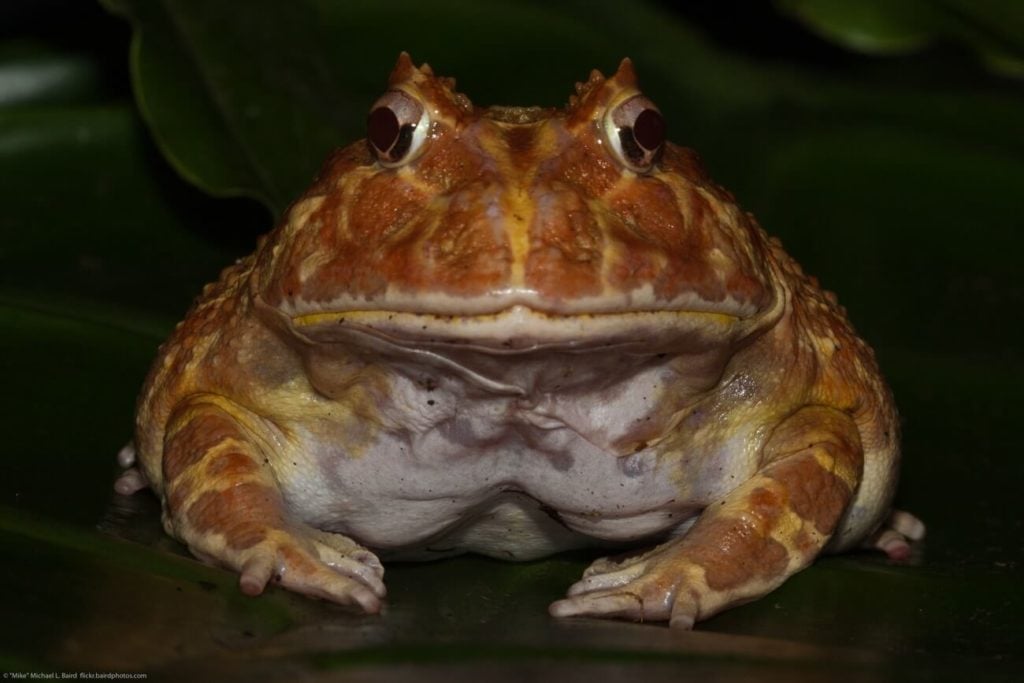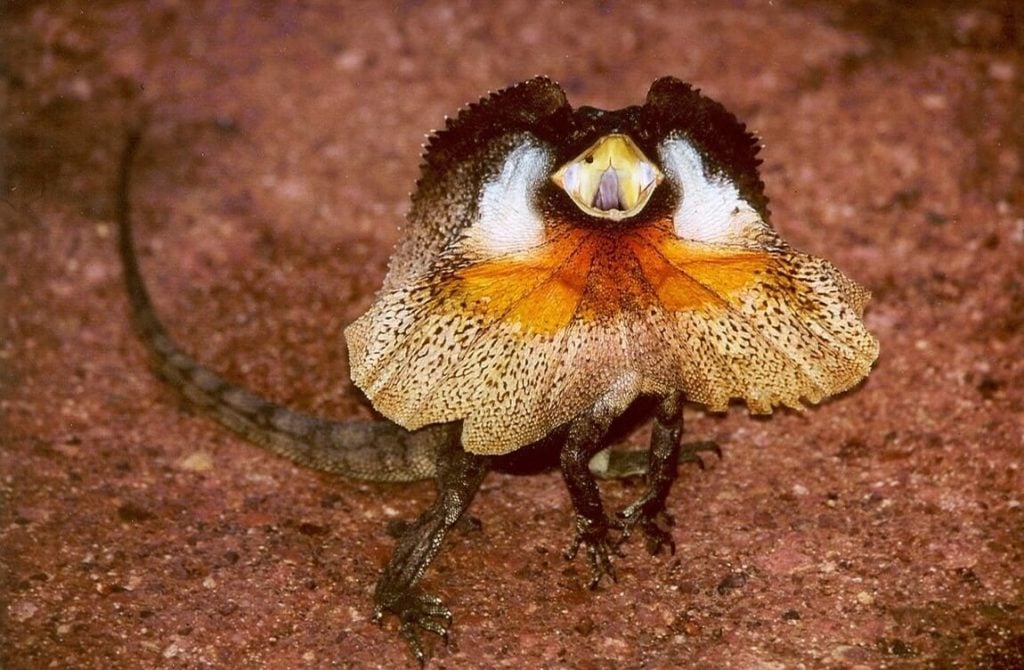Chinese cave geckos are an amazing lizard that we recommend all the time. The combination of their looks and low-maintenance nature makes them a great choice for reptile-enthusiasts of all experience levels.
But before you run out and get one, it’s important to fully understand their care requirements. Even hardy lizards need the right environment in order to thrive!
This guide will dig into the details of Chinese cave gecko care to make you ready for ownership. You’ll learn about their diet, habitat setup, size, and much more.
Table of Contents
Species Summary
Despite its somewhat intimidating looks, the Chinese cave gecko (Goniurosaurus hainanensis) is a wonderful pet reptile to care for. Docile by nature, these lizards to well in captivity and have been known to get quite comfortable with handling.
As their name would suggest, Chinese cave geckos are found in China. Most notably, they are native to southern regions like the island of Hainan.
In the wild, these lizards typically live in caves throughout lowland rain forests.
Known for their striking looks, these reptiles have been part of the trade since the 1990s. However, there has been a surge of popularity in recent years as more reptile enthusiasts discover all the great things the Chinese cave gecko has to offer.
Lifespan
The average Chinese cave gecko lifespan is 10 to 12 years when given the proper care and right living conditions.
In general, they’re relatively hardy compared to other lizard species. But that doesn’t mean you can get lazy with meeting their basic needs.
Like any other pet, Chinese cave geckos can respond poorly to inadequate living conditions. This can result in illness and a dramatically shortened lifespan.
Appearance & Colors
Most pet lizard species in the trade have natural colors to blend in with their surroundings. The same can be said about the Chinese cave gecko.
However, these lizards are nocturnal and dwell in dark caves, and their appearance reflects that lifestyle.
The base color of the Chinese cave gecko is purplish-black. The belly is usually gray with a tinge of purple. On their backs, these lizards have stark black patches covering the entire body.

Accompanying those patches are accents of yellow. Thick yellow bands wrap around the back. Those bands can extend down to the tail. For some specimens, the stripes are closer to orange in color.
Either way, it’s a beautiful accent that stands out even in dark conditions.
The tail of the Chinese cave gecko is thick and bulbous. The fatter the tail, the better. These lizards use the tail to store fat. The fat is then used as a source of fuel when food is sparse.
Expert Tip: Like other lizards, the tail can fall off. It regenerates with time. But the regrown tail is usually smaller in size than the original.
Another distinguishing feature of the Chinese cave gecko is its eyes. The eyes are bright red, making the lizard look like it came straight from a horror movie.
Sexing these lizards is very simple. Males have a noticeable bulge at the base of the tail.
Average Size
The typical Chinese cave gecko size is between 8 and 9 inches when fully grown. This measurement reflects the length from the snout to the tip of the tail.
If you get this lizard when they’re young, there will still be a lot of growth for them to do! When they first hatch, they’re approximately three inches.
Chinese Cave Gecko Care
Chinese cave gecko care is relatively easy compared to other reptile species. Because of their nocturnal lifestyle, their needs are more relaxed when it comes to lighting and temperature.
A lot of owners credit the ease of care as being the main reason they got these lizards. The combination of their unique looks and low-maintenance nature can’t be beaten!
That said, they still important husbandry needs. To help your lizard thrive, you’ll need to follow these important care guidelines.
Enclosure Size
Another big perk of caring for Chinese cave geckos is their small enclosure requirements. A single gecko will do fine in a small 10-gallon tank.
However, we always recommend moving up to a 15 or 20-gallon tank if you have the room.
Expert Tip: You don’t have to worry about spatial issues with this reptile. They do not mind having larger enclosures, so feel free to give your lizard as much room as you want.
One thing you do have to consider is the height. Chinese cave geckos prefer a bit of vertical space. An enclosure that measures at least 18 inches long, 18 inches wide, and 24 inches tall is preferred.
Also, choose an enclosure that has ample ventilation. Humidity levels are important with this reptile, so you’ll need to make sure that the environment can breathe.
Recommended Habitat Setup
One of the most important parts of Chinese cave gecko care is how you set up their habitat.
In general, natural decor is best for these lizards. Starting at the bottom of the enclosure, utilize a substrate material that can hold onto a bit of moisture. This will help you maintain humidity levels.
Cypress mulch, a mixture of sand and peat moss, or coco fiber will do well. You can also add sphagnum moss. Avoid anything like cat litter or gravel. These reptiles are prone to eating those materials, which isn’t good for their digestive tract.

A complicated setup isn’t necessary for Chinese cave geckos. But, extra decorative items can provide some enrichment and improve their quality of life. Add a couple of reptile hides at opposite sides of the enclosure for shelter.
Then, take advantage of items like cork bark and climbing vines to give your lizard some climbing surfaces.
Expert Tip: Don’t place climbing branches too high. Otherwise, you increase the risks of injury.
You can also implement artificial plants. Go for smooth plastic plants that can easily collect water. Some owners attempt to use live plants, but the conditions of the enclosure make it difficult for live plants to stay healthy.
Temperature & Lighting
Chinese cave geckos prefer cooler temperatures than many other types of geckos.
It’s important to create a temperature gradient using lights or an under-tank heat mat. Heat emitters work well too (they’re more useful if you live in a climate with colder winters though).
Here are the temperatures to remember:
- The cooler side of the enclosure should be between 65°F and 75°F.
- The warmer side should exceed this, but shouldn’t rise beyond 80°F.
Always make a point to check the temperature a couple of times per day (it’s easy to form this habit). Too much heat can be detrimental to this lizard’s health.
Lighting is only necessary if the enclosure doesn’t have access to ambient light. Chinese cave geckos are nocturnal. However, they still need a period of light to keep their internal clocks in check. If you’re using light, make sure that they are turned off once the sun goes down.
Because they are nocturnal, UVB lights are not required. Some owners still like to use them for good measure. But these lizards typically stay in their hides during the day. So, it would be no use to them!
Humidity
Humidity levels in the enclosure need to be between 50 and 60 percent. In times of shedding, they will tolerate up to 80 percent (this can help them through the process).
Like temperatures, it’s important to monitor humidity levels regularly. Too much humidity can lead to respiratory infections and serious health complications (more on that in a later section).
Water
Chinese cave geckos usually stay hydrated through the humidity in the air. They’ll also drink dew droplets off on leaves. Every once in a while, they may also choose to drink out of a dish.
Keep a small shallow dish in the enclosure and keep it filled with fresh water. A buildup of poop or muck can lead to illness.
Expert Tip: Make sure that the dish is shallow enough for them to stand in. Chinese cave geckos are not swimmers, so a deep dish could lead to drowning!
Food & Diet
Chinese cave geckos thrive when their diet consists mainly of insects! They will eagerly accept dubia roaches, butter worms, crickets, and black soldier fly larvae. Occasional mealworms are good, too.
Gut-load insects with fruits and vegetables before feeding. This will help maximize the nutrition these reptiles get from their food.
Adults Chinese cave geckos like to eat every three days or so, and Juveniles do best when they are fed every other day. Insects should be no bigger than the space between the lizard’s eyes.
Every other feeding, dust the insects with calcium powder. Every three or four feedings, add in a mineral supplement for good measure.
Potential Health Issues
The biggest potential health problems owners encounter are directly related to heat and humidity. Chinese cave geckos live in cooler caves in the wild. As a result, they do not fare well in warmer habitats like other species.
Use a thermometer and hygrometer to keep those levels stable. If the lizard gets too hot, their health will decline dramatically. If the issue isn’t addressed, the excess heat can prove to be fatal.
The same goes for humidity. If this is the case your lizard will likely experience a respiratory infection. This health condition manifests itself with inflammation in the mouth and nostrils.
Bacterial infections are relatively common, too. Infections are usually caused by a poorly maintained environment. Spot clean messes daily and take care of any glaring issues once a week.
Expert Tip: Every month, perform a deep clean. This means replacing the bedding, removing all of the decorations, and sanitizing the enclosure. You can use hot soapy water and some reptile-approved sanitizing solutions to keep your lizard’s home bacteria-free.
Behavior & Temperament
Overall, Chinese cave geckos are docile. They can be a bit shy at first. But, they’re not known to bite owners that often.
A neat thing about these lizards is that they can do well in groups!
Juveniles do fine in larger groups. As adults, you can keep multiple females in the same habitat as a single male. Housing two males together is not recommended, as they will occasionally fight and tear off their tails.
Don’t expect to see your Chinese cave gecko much throughout the day. As we mentioned earlier, they are nocturnal.
They will come out of hiding when light levels lower. At this point, they’ll spend a bit of time climbing and moving about the habitat to regulate temperature.
Handling Them
When you first bring your Chinese cave gecko home, it will likely be shy and flighty. They require a bit of time to get used to you.
Once they are more confident in their surroundings, you can start desensitizing the lizard to handling. Start by holding them for about 15 minutes once a week. As they get more comfortable, you can start increasing handling times.
Eventually, the lizard will grow to trust you! Chinese cave geckos are known for remaining calm when handled.
Keep handling sessions to dusk hours. Don’t wake them up to hold them, as this will only cause stress. Be gentle and give your lizard some time to adjust once it’s in your hand. Never squeeze them or apply too much pressure.
Doing so will cause the gecko to drop its tail! It’s also never a good idea to handle the lizard when they are shedding.
Ready To Go?
Chinese cave gecko care is really nothing to be intimidated by. These reptiles are very low-maintenance and easy to keep happy.
When you add their beautiful appearance to the equation, it makes getting one a no-brainer. We recommend this lizard to new reptile owners all the time and know many other experienced owners who do the same.
If you’re still on the fence about getting one and have some additional questions we didn’t answer in this care sheet, feel free to drop us a line. We love helping our readers directly!


